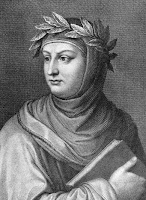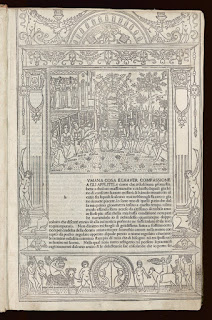Giacomo Manzù – sculptor
Shoemaker’s son who became internationally acclaimed sculptor
Sculptor Giacomo Manzù was born Giacomo Manzoni on this day in 1908 in Bergamo in Lombardy. The son of a shoemaker, he taught himself to be a sculptor, helped only by a few evening classes in art, and went on to achieve international acclaim. Manzoni changed his name to Manzù and started working in wood while he was doing his military service in the Veneto in 1928. After moving to Milan, he was commissioned by the architect, Giovanni Muzio, to decorate the Chapel of the Sacred Heart Catholic University. But he achieved national recognition after he exhibited a series of busts at the Triennale di Milano. The following year he held a personal exhibition with the painter, Aligi Sassu, with whom he shared a studio. He attracted controversy in 1942 when a series of bronze bas reliefs about the death of Christ were exhibited in Rome. They were criticised by the Fascist Government after they were interpreted as an indictment of Nazi-Fascist violence and Manzù had to go into hiding for a while, fearful of arrest. Manzù had started teaching at the Accademia di Brera in Milan, but during the war he went back north to live in Clusone, to the north of Bergamo. Read more…
__________________________________________________________
Giacomo Puccini – opera composer
Musical genius who took the baton from Verdi
Giacomo Puccini, one of the greatest composers of Italian opera, was born on this day in 1858 in Lucca in Tuscany. He had his first success with his opera, Manon Lescaut, just after the premiere of Verdi’s last opera, Falstaff. Manon Lescaut was a triumph with both the public and the critics, and he was hailed as a worthy successor to Verdi. Puccini was born into a musical family who encouraged him to study music as a child while he was growing up in Lucca. He moved to Milan to continue his studies at the Milan Conservatory, where he was able to study under the guidance of the composer, Amilcare Ponchielli. He wrote an orchestral piece that impressed Ponchielli and his other teachers when it was first performed at a student concert. Ponchielli then suggested that Puccini’s next work might be an opera. Puccini’s first attempt at opera was successful enough for it to be purchased by a firm of music publishers and after some revisions it was performed at Teatro alla Scala in Milan. His next opera, Edgar, which also made its debut La Scala, was not so well received but his third composition, Manon Lescaut, was a triumph when it was first performed in Turin in 1893. Read more…
__________________________________________________________
Giuseppe Bergomi – footballer
World Cup winner who spent his whole career with Inter
The footballer Giuseppe Bergomi, renowned as one of the best defenders in the history of Italian football and a member of the World Cup-winning Azzurri side of 1982, was born on this day in 1963 in Milan. Bergomi spent his entire club career with the Milan side Internazionale, spanning 20 years in which he made 756 appearances, including 519 in Serie A, which was a club record until it was overtaken by the Argentine-born defender Javier Zanetti, who went on to total 856 club appearances before he retired in 2014. In international football, Bergomi played 87 times for the Italian national team, of which he was captain during the 1990 World Cup finals, in which Italy reached the semi-finals as hosts. Alongside the brothers Franco, of AC Milan, and Giuseppe Baresi, his team-mate at Inter, and the Juventus trio Gaetano Scirea, Antonio Cabrini and Claudio Gentile, he was part of the backbone of the Italian national team for much of the 1980s. He made his Azzurri debut in April 1982, only a couple of months before the World Cup finals in Spain, aged just 18 years and 3 months, making him the youngest player to feature in a match for Italy since the Second World War. Read more…
________________________________________________________
Giovanni Bottesini - double bass virtuoso
Musician was also a composer and conductor
The composer, conductor and double bassist Giovanni Bottesini was born on this day in 1821 in Crema, now a city in Lombardy although then part of the Austrian Empire. He became such a brilliant and innovative performer on his chosen instrument that he became known as “the Paganini of the double bass” - a reference to the great violin virtuoso Niccolò Paganini, whose career was ending just as his was beginning. Bottesini was one of the first bassists to adopt the French-style bow grip, previously used solely by violinists, violists and cellists. He was also a respected conductor, often called upon to direct performances at the leading theatres in Europe and elsewhere, and a prolific composer, particularly in the last couple of decades of his life. A close friend of Giuseppe Verdi, he wrote a dozen operas himself, music for chamber and full orchestras, and a considerable catalogue of pieces for double bass, for accompaniment by piano or full orchestra, or duets. When conducting opera, Bottesini would often bring his double bass on stage to play fantasies based on the evening's opera, of his own composition, during the intermission. Read more…
















